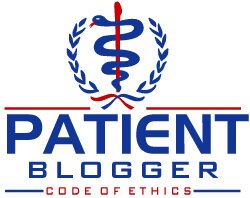Well, I'm finally back here. The excitement of the election and the inauguration of Barack Obama has finally died down a bit and I'm able to tear my brain away from politics enough to concentrate on doing some medical research.
It also helps that I recently discovered a brand new condition that is fascinating to me and will be of interest, I'm sure, to all of you hypochondriacs out there.
I discovered it because a friend recently told me that when she was a child she experienced spells where everything around her - the door, the window, the furniture, whatever - seemed abnormally large and she felt abnormally small. This experience was accompanied by a distinctive odor. I immediately thought that if this was something neurological, which it appeared to be, it probably had a name like "Alice in Wonderland Syndrome," since it sounded so much like what happened in the story..."One pill makes you larger, one pill makes you smaller..."
So, being me, I had to go Google it. Imagine my surprise when I found there really is a syndrome called Alice in Wonderland Syndrome!
According to HealthCentral.com, Alice in Wonderland Syndrome was first described by C.W. Lippman in 1952, but J. Todd actually named the syndrome "Alice in Wonderland" syndrome in his 1955 article, "The Syndrome of Alice in Wonderland," in the Canadian Medical Association Journal. As a result, the syndrome is sometimes also called Todd's Syndrome.
What Are the Symptoms of Alice in Wonderland Syndrome?
According to the Migraine Aura Foundation, the syndrome refers to "a variety of self-experienced body image disturbances affecting the experience of the size, mass, shape of the body or its position in space."
Sometimes the affected person experiences a feeling of everything around them being much larger and they themselves feel smaller (macropsia) or vice versa - where they feel very large and everything around them seems very small (micropsia). These perceptions are also known as macro-somatognosia or micro-somatognosia.
These symptoms can appear along with other distortions, in time, vision, or other senses (including smell, which would explain the odor my friend experienced).
Sufferers may also see changes in the size of body parts such as their hands.
Following is a full list of possible additional symptoms:
"- feeling as if walking doesn't get them anywhere, as if they were walking on a treadmill
- the perception that only parts of their body are larger/smaller than normal
- - the feeling of walking on sponges
lingering touch sensation, i.e. after you've touched something, you continue to feel it after you've stopped touching it. Touch sensation hallucinations can also occur.
- lingering sound sensation, i.e. you continue hearing something after the noise has stopped
- anxiety
- loss of limb control and general discoordination, usually because of distorted perceptions of where one's body is in relation to surroundings
- agnosia / memory loss (though this is thought to be more of a side-effect: If you're having to think really hard about every movement, it's hard to pay attention to anything else and thus hard to remember things.)"
What Causes It?
Alice in Wonderland Syndrome can be caused by/associated with:
- Migraines (the symptoms of AIWS may be part of the "aura" that precedes a migraine; often no headache is actually experienced).
- Certain drugs (including cough syrups containing dextromethorphan)
- Viruses (Epstein-Barr, which causes Mononucleosis, or other viruses)
- Epilepsy
- Brain tumors
- Schizophrenia
- Delirium Tremens (from alcohol abuse)
What Are the Treatments?
Generally there is no specific treatment for AIWS; the root cause is what must be treated. For the most common cause, migraines, there are a number of remedies, as well as dietary restrictions that can help mitigate the symptoms. See this link to the Mayo Clinic for full information about migraine headaches.
For more information on treatment for epilepsy, see this link to Epilepsy.com.
Often the syndrome occurs in young children and eventually they may outgrow it. Others don't experience it until adulthood.
Will You Get It?
Probably not, unless you are a migraine sufferer. According to Pediatrics in Review:
"In the US it is estimated that 8.7 million females and 2.6 million males suffer from disabling migraine. The occurrence of migraine is greatest in adulthood, but this disorder is one of the most common causes of headache in children as well. In a 14-year longitudinal study of more than 9000 school children, Billie reported that 5% had had migraine attacks by 15 years of age.
A recent population-based study in Olmsted County, Minnesota, suggests an even greater incidence in this age range. For example, the highest incidence of newly diagnosed migraine headaches appearing in males, 246 per 100 000 person-years, occurred in those aged 10 to 14 years."
For an interesting article on the subject, see this article from WABC news.
Saturday, February 21, 2009
Subscribe to:
Posts (Atom)






